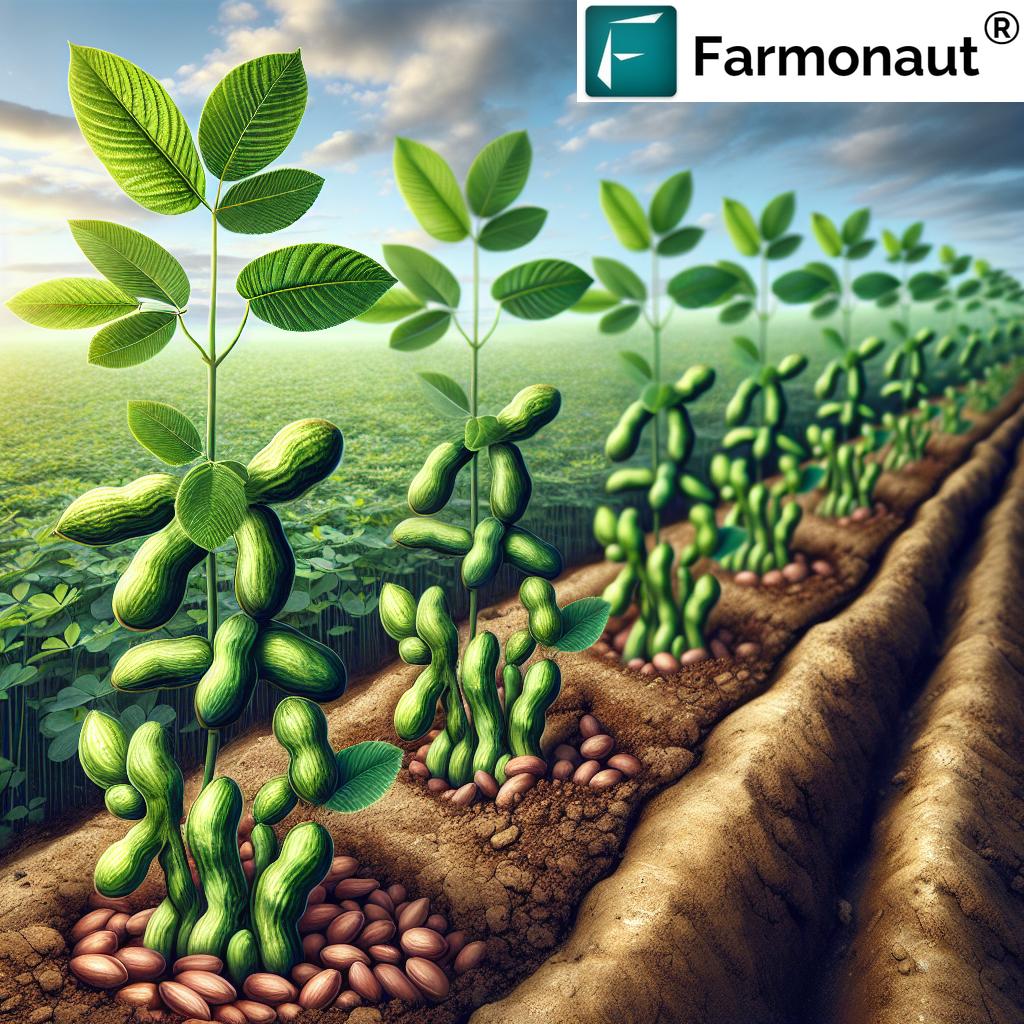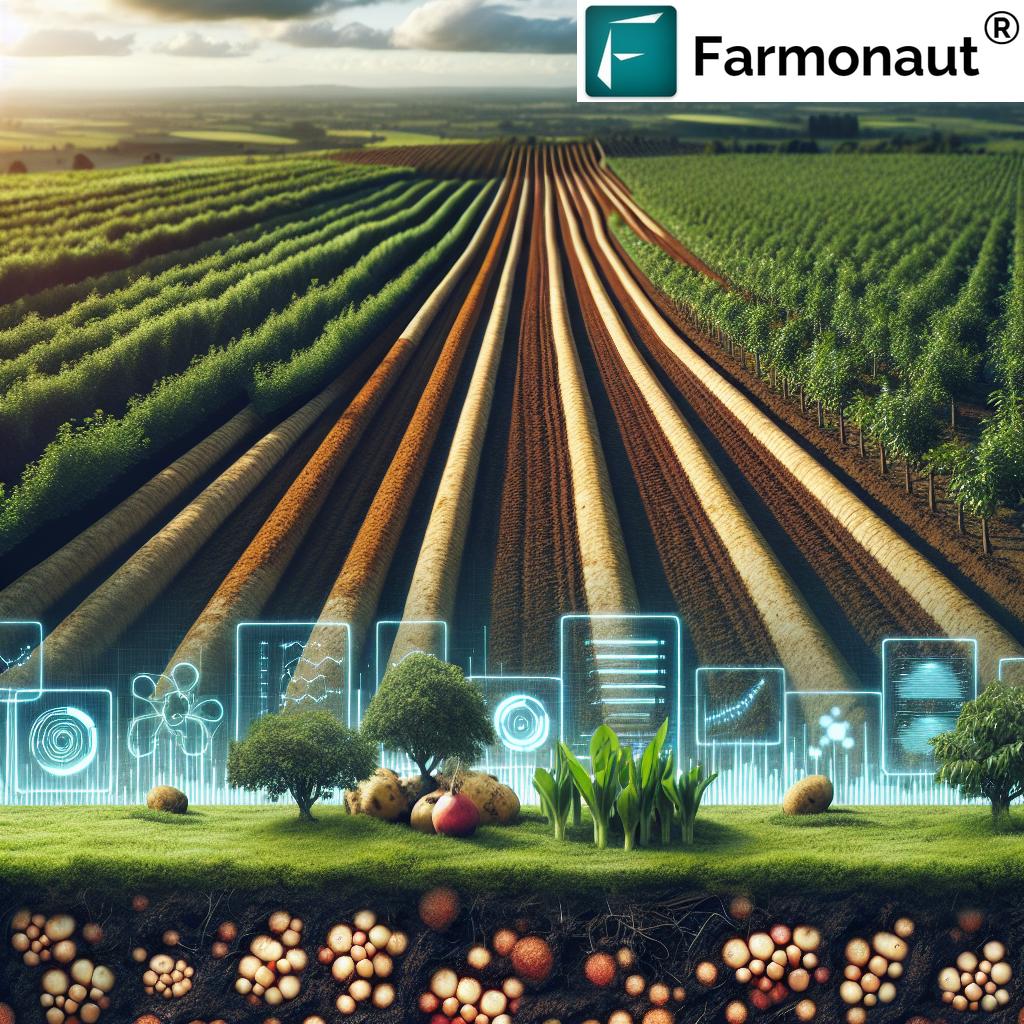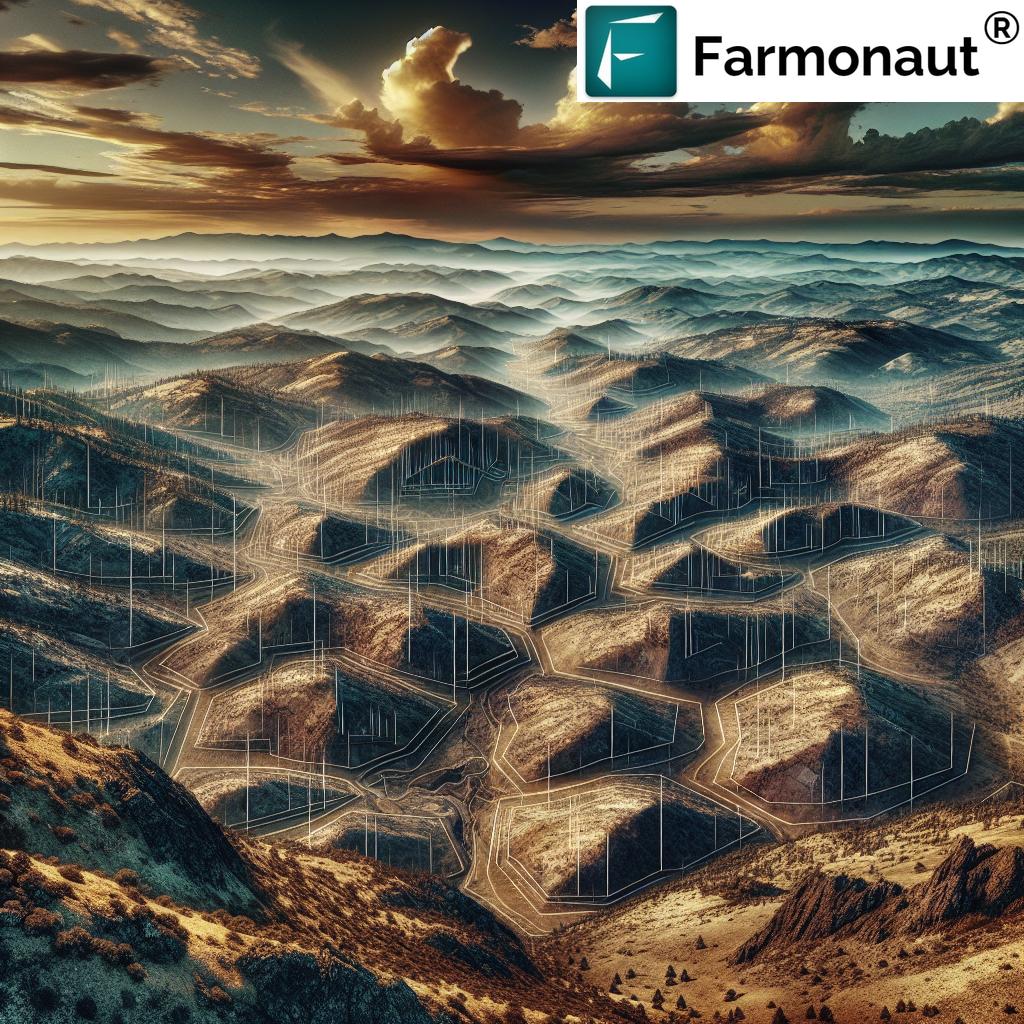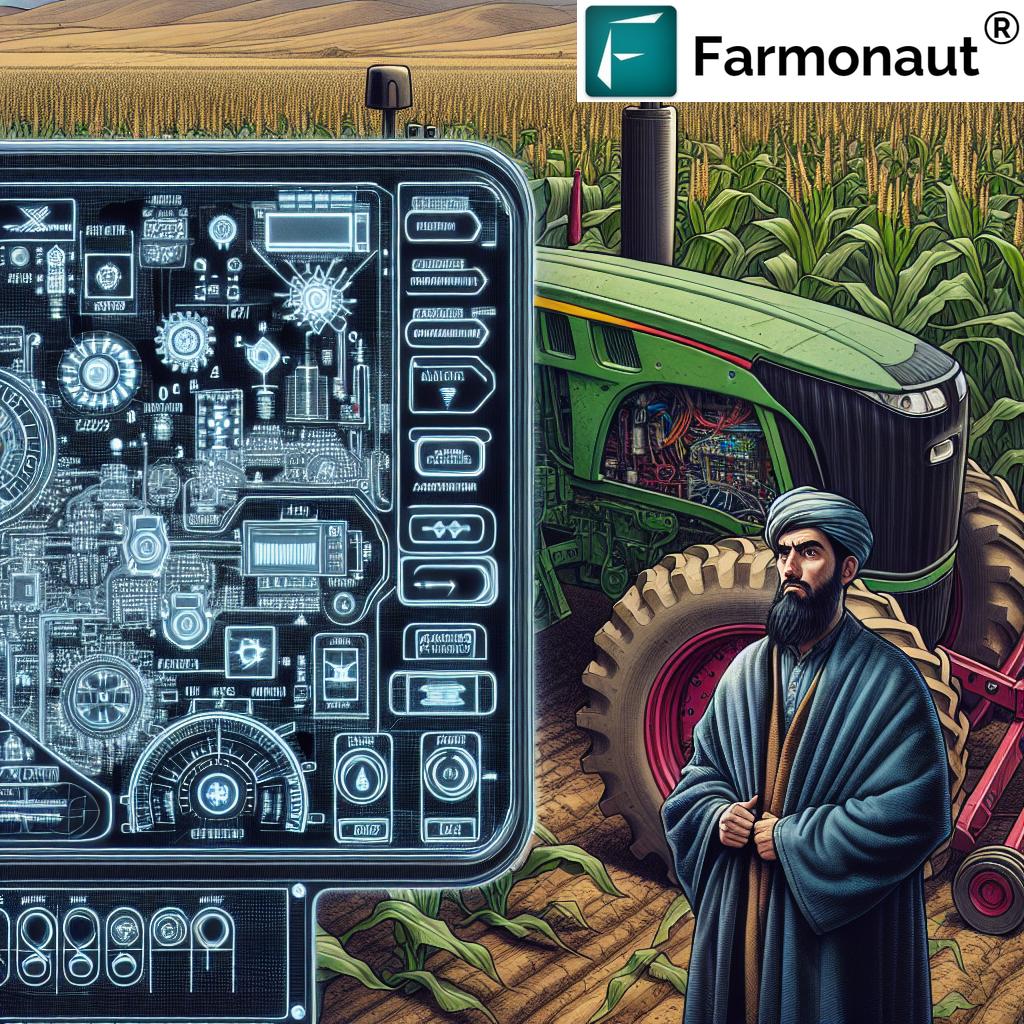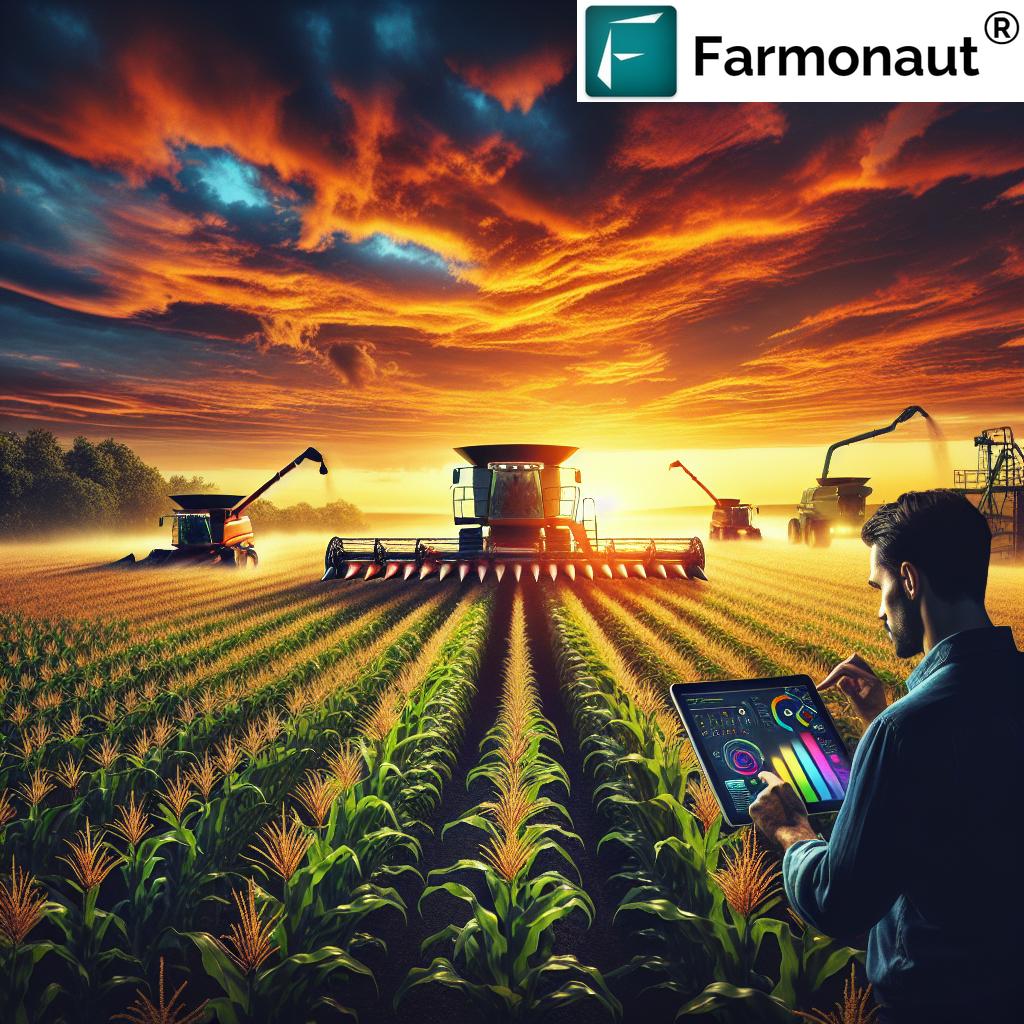Farming Cities in USA: Vertical & Urban Farming Trends Transforming Food Production in 2025 & Beyond
Table of Contents
- Farming in USA: The Rise of Urban Agriculture and Vertical Farming
- Quick Urban & Vertical Farming Trivia (2025)
- The Evolution of Farming in the USA (2025 Update)
- What Defines ‘Farming Cities’ in USA?
- Urban Agriculture: Benefits, Challenges, and Sustainability (2025)
- Vertical Farming in Cities: The American Urban Revolution
- Leading U.S. Cities Embracing Vertical and Urban Farming (2025 Estimates)
- Key Technologies Fueling Urban & Vertical Farming in USA (2025+)
- How We at Farmonaut Support Precision Urban & Vertical Farming
- How to Use Farmonaut Solutions for Urban/Vertical Farming
- Addressing Challenges and Mapping the Future of Urban Farming USA
- FAQ: Vertical Farming and Urban Agriculture in the USA
Farming in USA: The Rise of Urban Agriculture and Vertical Farming
Agriculture has long been a cornerstone of the American economy, culture, and food system. The United States remains one of the world’s leading agricultural producers, known for its vast rural farmlands traditionally dominated by major staple crops and livestock operations. However, as we move through 2025 and beyond, farming in USA is undergoing a significant transformation. Our agricultural landscape is being reshaped by
technological advances, intensifying urbanization, sustainability goals, and evolving consumer demands.
A notable trend for 2025 is the rise of farming cities in USA— urban centers actively integrating agricultural production within their boundaries, especially through vertical farming and urban agriculture models.
Urban Farming: Why It Matters Now
Why is the rise of urban agriculture capturing national attention?
- Over 80% of USA’s population lives in urban areas. That’s 8 in 10 Americans who rely on cities for food access—which greatly amplifies demand for fresh, locally-grown produce.
- Environmental concerns and climate change are pressuring food supply systems. Localizing food production inside cities—using new methods—improves supply security and resilience.
- Technological innovation in the form of hydroponics, aeroponics, LED lighting, AI, and satellite-based insights is making urban & vertical farming more productive and sustainable than ever before.
Let’s explore in depth how urbanization and technology are thrusting farming cities in USA—and vertical farming in cities—into the spotlight.
The Evolution of Farming in the USA (2025 Update)
Through most of the 20th century, farming in USA was defined by rural farmlands—solid expanses of corn, soybeans, wheat, and livestock. Today, the USA remains a top agricultural producer (by output and export), but the demographic shifts, environmental concerns, and economic disruption have compelled a reimagining of our entire food production system.
- Urban populations now make up 80% of U.S. residents, steering interest towards farming methods compatible with dense city environments, limited space, and modern urban lifestyles.
- Consumers are demanding fresher, more sustainably grown produce, and value shorter supply chains that improve both traceability and food security.
- Climate change is intensifying droughts, storms, and crop failures. Sustainable agricultural techniques that can operate year-round—independent of weather shocks—are increasingly vital.
These factors are converging to reshape farming in the USA. That’s why farming cities in USA and vertical farming in cities are rapidly ascending trends to meet local food security, environmental sustainability, and community economic needs.
What Defines ‘Farming Cities’ in USA?
The phrase farming cities in USA refers to urban and metropolitan centers that actively integrate agriculture within their limits.
Key defining elements:
- Urban Food Production: Growing food within city boundaries—on rooftops, in community gardens, in abandoned lots, or inside offices and warehouses (via vertical farms).
- Vertical Farming in Cities: Utilizing vertical stacking and controlled-environment agriculture to maximize per-square-foot output.
- Community Engagement: Involving residents, local entrepreneurs, non-profits, and city governments in urban agriculture initiatives.
- Technological Integration: Harnessing advanced farming technologies (hydroponics, aeroponics, AI, data analytics) for precise, sustainable food production.
- Policy Support: Adoption of zoning law adjustments, grants, green infrastructure incentives, and sustainability policies that promote and protect urban farming.
A few American cities have emerged as pioneers in the rise of urban/vertical farming, such as New York, Chicago, Detroit, San Francisco, Boston, and Seattle. These farming cities are not just growing food—they are reshaping economic, environmental, and social resilience for 2025 and beyond.
Urban Agriculture: Benefits, Challenges, and Sustainability (2025)
Major Benefits of Integrating Agriculture Within Cities
- Local Food Production & Freshness: Urban and vertical farms supply local communities with fresh, nutritious produce mere hours after harvest, dramatically reducing the need for long supply chains.
- Reduced ‘Food Miles’ & Carbon Emissions: Local production cuts the distance food travels from farm to plate, reducing transport emissions and enhancing food security.
- Improved Access in Food Deserts: Urban farms are often located in underserved neighborhoods, directly combating food insecurity and increasing access to healthy foods.
- Climate & Environmental Benefits: Green roofs, rooftop farms, and city gardens help cool urban heat islands, sequester carbon, improve air quality, and recycle organic waste.
- Creating Green Jobs: Urban agriculture creates green jobs and fosters local entrepreneurship—stimulating the urban economy.
- Community Engagement & Education: Urban farms often serve as community hubs that provide education, promote healthy eating, and foster environmental stewardship.
Municipalities are increasingly incentivizing urban agriculture through zoning law adjustments, grants, and public-private support, creating supportive frameworks for farming to flourish within dense city environments.
Challenges for Urban and Vertical Farming in USA (2025)
- High Startup & Operating Costs: Infrastructure, energy demand, and skilled labor still make urban/vertical farms costly to launch.
- Energy Use: LED-lit, climate-controlled indoor farms require significant energy—leading to concerns over sustainability and costs.
- Land Use & Zoning Barriers: Not all city regulations easily accommodate commercial-scale farming operations.
- Scaling Up: While small-scale projects are widespread, scaling these approaches to provide significant shares of a city’s food supply remains a work-in-progress.
- Equity & Accessibility: There’s an ongoing need to ensure new farming ventures benefit diverse communities and reduce—not amplify—inequities in healthy food access.
Despite these challenges, 2025 marks a period where urban farming and vertical farming in USA are more than trends—they are core to agricultural innovation, resilience, and sustainability strategies.
Vertical Farming in Cities: The American Urban Revolution
What is Vertical Farming? Why Is It Thriving in U.S. Cities?
Vertical farming refers to growing crops in vertically stacked layers—often using hydroponics, aeroponics, and other controlled-environment agriculture (CEA) techniques—enabling food production to flourish in cities with limited land and high demand.
- Maximizes Space: Stacked layers create orders-of-magnitude increases in output per square foot.
- Drastically Saves Water: Hydroponic vertical farms use up to 95% less water versus traditional soil farming—essential for sustainability and climate resilience.
- Pesticide-Free & Highly Controlled: Controlled environments allow for year-round production and vastly reduce the need for pesticides or herbicides.
- Suitable for Urban Reuse: Warehouses, abandoned industrial sites, and even skyscraper floors can be retrofitted as indoor farms.
- AI, Robotics & Data Integration: AI-driven optimization, robotic harvesting, and IoT monitoring help maximize efficiency and minimize resource use.
- Supply Chain Resilience: Growing food close to consumers means less vulnerability to transportation delays and extreme weather, improving food supply security.
- Green Energy Integration: Renewable energy (solar, wind) is increasingly powering urban vertical farms for lower emissions.
By 2025, vertical farming is now integral in cities such as New York, Chicago, Detroit, San Francisco, and Los Angeles. Commercial producers AeroFarms (Newark, NJ) and Plenty (San Francisco) supply major markets with leafy greens, herbs, and microgreens—demonstrating how farming cities in USA are driving innovation.
Key Features of Leading U.S. Vertical Farms by 2025
- Automated, AI-optimized indoor operations that can monitor, adjust, and even harvest crops with precision.
- Transparent supply chains using traceability solutions, which help boost consumer confidence and food safety.
- Blockchain verification (like solutions offered by our traceability platform) to ensure produce is certified and trackable from seed to shelf.
- Integration of renewable energy sources and carbon tracking to maximize sustainability benefits.
Leading U.S. Cities Embracing Vertical and Urban Farming (2025 Estimates)
The following comparison illustrates how major U.S. cities are integrating farming and vertical agriculture technologies to address urban challenges, promote sustainability, and deliver on food production innovation by 2025.
These cities exemplify the nationwide movement towards integrating urban & vertical farming into the core of the American food system in 2025.
Key Technologies Fueling Urban & Vertical Farming in USA (2025+)
How are farming cities in USA integrating advanced technologies to scale urban food production sustainably? The answers lie in:
- Hydroponics & Aeroponics: Growing crops in nutrient-rich water or mist—without soil—minimizes water use, maximizes yields, and enables vertical stacking indoors.
- LED Lighting: High-efficiency LED lighting delivers precisely tuned light spectra for year-round growth, regardless of external conditions.
- Climate Control Systems: Advanced HVAC controls climate, humidity, and ventilation for ideal crop growth, regardless of season or urban climate.
- AI and Data Analytics: AI-driven monitoring, predictive analytics, and robotics streamline operations within vertical farming in cities, optimizing inputs and maximizing yields with less environmental impact.
- Blockchain Traceability: Blockchain-based supply chain solutions (Farmonaut Traceability Platform) guarantee transparency and trust for consumers—from seed to store shelf.
- Satellite Data & IoT Devices: Satellite-based insights (like NDVI crop health, soil moisture) and sensors (see Farmonaut Crop Advisory App) are now supporting even urban growers with real-time, science-driven alerts.
- Renewable Energy Integration: Urban/vertical farming leaders are increasingly turning to solar, wind, and battery storage, reducing environmental footprints.
- Fleet & Resource Management: For urban logistics involving multiple food delivery points and equipment, Farmonaut Fleet Management helps optimize operations, ensuring products reach local markets efficiently and sustainably.
Urban and vertical farming in the USA is no longer just a trend but a sophisticated, tech-enabled industry creating resilient, sustainable food systems for American cities.
How We at Farmonaut Support Precision Urban & Vertical Farming
At Farmonaut, our mission is to make precision agriculture affordable and accessible, empowering farmers and agribusinesses of all sizes—including those in farming cities in USA and vertical/urban environments—to thrive in an increasingly data-driven, sustainable world.
For urban and vertical farmers, our technology offers:
- Satellite-Based Crop Health Monitoring: Constant, real-time NDVI and soil moisture analytics, even in city-bound vertical farms, enabling proactive irrigation and nutrient management.
- Jeevn AI Advisory: AI-driven recommendations for crop rotation, climate risk management, pest/disease warnings, and best practices—fine-tuned for urban micro-climates.
- Blockchain-Based Traceability: From seed to retail, robust product traceability solutions help urban food producers deliver transparency and trust in local supply chains.
- Resource & Fleet Management: Optimize logistics for food delivery, reduce carbon emissions, and manage multiple vertical or urban greenhouses effortlessly with Fleet Management tools.
- Carbon Footprinting Tools: Urban agriculture stakeholders can now track and minimize carbon footprints—showcasing sustainability metrics for cities and conscious consumers alike.
-
Scalable API Platform: Developers and agri-tech startups in vertical/urban farming can plug our satellite and weather data into their own apps via our
Farmonaut API.
Combined, these solutions provide urban farmers across USA cities the edge they need to optimize production, reduce resource input, demonstrate sustainability, and expand reliably as the urban farming movement grows.
How to Use Farmonaut Solutions for Urban/Vertical Farming
Step-by-Step: Leveraging Farmonaut’s Advanced Technological Tools
-
Monitor Farm Health from Startup to Scale:
Sign up on our web or mobile app for instant access to satellite-driven insights, vital for city farms dealing with intense resource constraints. -
Unlock Pro Advisory and Smart Resource Planning:
Use Jeevn AI to receive personalized, actionable agronomy insights—maximizing yield and quality in urban microclimates. -
Showcase Sustainability & Build Transparency:
Integrate carbon footprinting and traceability to differentiate your food products and meet city green labeling requirements. -
Fleet & Resource Optimization for Urban Markets:
Streamline your delivery, greenhouse supplies, and logistics within the city using our fleet management module—cutting costs and delivery times. -
Scale Up with Secure Financing:
If you need funding as an urban farm entrepreneur, leverage our crop loan & insurance solutions to unlock satellite-verified lending and insurance support. -
API for Developers & Tech-Driven Urban Farms:
Access our API and developer docs for custom, advanced urban ag-tech applications.
We democratize access to actionable, precision agriculture data for everyone from small rooftop growers to industrial-scale vertical farms in major U.S. cities.
Farmonaut Subscription Plans for Urban & Vertical Farming
Choose from flexible, scalable subscription options to suit your urban farming ambitions:
Addressing Challenges and Mapping the Future of Urban Farming USA
Key Urban Farming Challenges Still Facing U.S. Cities
- Energy Consumption: Urban/vertical farms need to prioritize green electricity sources and highly energy-efficient systems to reach true sustainability.
- Startup Cost & Investment: Lowering barriers for new urban farmers—via financing, technical advisory (see our affordable platforms), and city-level support—remains vital for broader adoption.
- Scaling Up Production: Scaling from community plots to commercial volume—so cities can meet meaningful shares of produce demand—calls for innovation, shared logistics, and smart city collaboration.
- Equitable Food Access: It’s imperative that benefits reach all residents, especially in food deserts and underserved communities.
- Resource Management: Smart use of water, nutrients, and city waste recycling (where large scale farm management solutions help) must be built in from day one.
What’s Next: The Promise of Urban & Vertical Farming in USA (2025+)
- Increased automation and AI to drive down costs while maximizing efficiency in urban farms.
- More cities incentivizing urban agriculture integration via tax, utilities, and zoning adjustments.
- Widespread use of blockchain, satellite, and IoT-powered transparency tools, powering consumer trust.
- Expansion of carbon tracking and sustainability reporting for urban produce as cities pursue aggressive climate change goals.
- Greater collaboration between local producers, city governments, and technologists driving the innovative urban farming ecosystem.
- Continued growth in vertical farming in cities—delivering fresh produce, economic opportunity, and climate adaptation capacities.
The future of farming in USA is a hybrid of rural and urban ingenuity, using 21st-century innovation for food security, environmental sustainability, and robust urban economies.
FAQ: Vertical Farming and Urban Agriculture in the USA
What is the difference between urban agriculture and vertical farming?
Urban agriculture refers broadly to food production within a city’s boundaries—including community gardens, rooftop plots, greenhouse farming, and vertical farms. Vertical farming is a specific type of urban agriculture that uses vertically stacked layers and controlled environments (like hydroponics, aeroponics, LED lights) to maximize crop yields in minimal space.
Why are farming cities in USA important for 2025 and beyond?
Farming cities dramatically shorten food supply chains, increase local food security, accelerate sustainable production, and help cities adapt to climate and environmental challenges. By 2025, they are leading models of innovation in the global agricultural landscape.
Which major U.S. cities lead in vertical and urban farming adoption?
New York City, Chicago, Detroit, San Francisco, Los Angeles, Boston, and Seattle are leaders, with city-level incentives, major commercial vertical farms, and vibrant urban agriculture cultures.
What role do technologies like AI, IoT, and satellite insights play?
These technologies optimize crop growth, minimize resource use, enable precision management, and provide real-time data crucial for maximizing productivity and sustainability—whether on a rural field or an urban rooftop.
Can Farmonaut support city-based farms?
Yes. Our mobile and web platform, API, and solutions for traceability, carbon reporting, and fleet/resource management are designed for both rural and urban/vertical farms.
How can cities further support the rise of urban agriculture?
By adjusting zoning laws, subsidizing sustainable energy/water use, funding pilot initiatives, and encouraging collaboration between local entrepreneurs, citizens, and technology providers.
Conclusion: Farming USA’s Urban & Vertical Revolution (2025 & Beyond)
Farming in the USA in 2025 is vastly different than it was in the 20th century. As urbanization accelerates, technological innovation deepens, and sustainability goals become more urgent, American cities are now active centers of food production, innovation, and environmental stewardship.
Vertical farming in cities and urban agriculture are tasks not only for community gardeners and tech startups but for every city ecosystem looking to overcome 21st-century food and climate challenges. With platforms like Farmonaut delivering affordable, scalable precision agriculture tools, the future of American farming spans
rural fields to urban rooftops—meeting growing demand for fresh, sustainable, and local produce within our own communities.
Ready to join the urban farming revolution?





